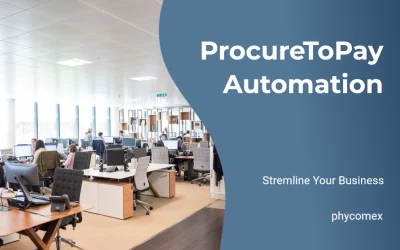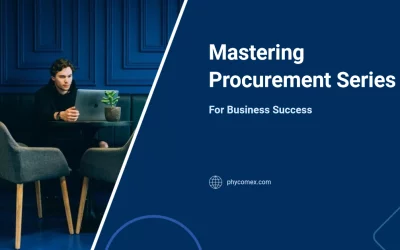Streamlining procurement is pivotal for enhancing performance and ensuring your business operates efficiently.
This piece delves into the significance of process, personnel, and documentation in procurement, offering insights on refining the process for superior outcomes.
Additionally, we’ll explore how software can enhance accounts payable methods.
What Is Procurement
Understand procurement and how it impacts your business with a comprehensive overview of the procurement cycle.
Procurement is the process of acquiring goods and services from external vendors. It’s a cyclical process that involves various stages, from contract negotiation to implementing changes if vendors don’t meet expectations.
A well-structured procurement process can bring many benefits, including cost savings, improved transparency, and streamlined operations. However, managing the process can be challenging, as it involves multiple stakeholders, paperwork, and risk management considerations.
To maximize the benefits of a centralized procurement system, businesses should consider using automated management software, which helps simplify accounts payable procedures.
People and Paperwork in Procurement
You understand how people and paperwork play a role in the procurement process. Different stakeholders have specific responsibilities in the procurement lifecycle and the risk and cost of transactions are directly related to the number of parties engaged.
People, paperwork, and process are the three Ps of procurement management. Proper supplier evaluation and contract management are key steps for successful procurement. This includes:
- Evaluating the qualifications and capabilities of potential suppliers
- Creating and executing RFI, RFP, and RFQ documents
- Negotiating contracts to get the best value for money
- Keeping accurate records of vendor invoices and purchase orders
The 7-Step Procurement Process
You can ensure optimal business performance by strategically following the 7-step procurement process. The steps involve:
- Identification of business needs
- Purchase requisitions & approvals
- RFX creation and execution
- Vendor selection & contract negotiation
- Vendor collaboration implementation
- Supplier performance review
- Record keeping of vendor invoices
Streamlining procurement can help you reduce risks and costs associated with external vendors. Effective vendor management requires clear goals, priorities, and limits set by organizational stakeholders.
The process also involves negotiation of contracts and onboarding of vendors to ensure seamless integration of the new supply chain. Regular performance reviews of suppliers are necessary to ensure they meet company objectives and expectations.
Keeping digital records of supplier invoices and purchase orders can simplify compliance and audit processes. Automated management tools can help you monitor vendor bills and accounts payable procedures in one place.
Step 1: Identification of Business Needs
Easily and effectively, you can identify business needs for a successful procurement process. With the right evaluation and research, you can identify the most suitable vendors, products and services that best meet the requirements of the organization. Here are a few key points to consider when evaluating business requirements:
- Understand the scope and objectives of the procurement process.
- Research the market for the best deal and quality of products/services.
- Gather information about user licenses and other non-negotiable characteristics.
- Analyze the strategic value, potential risks, and expense caps of the procurement.
Procurement evaluation is a vital part of any business. With the right assessment, you can ensure that the organization is getting the best value for their money. The process of identifying business needs makes sure that the right vendors and products are chosen for the business. This helps ensure the success of the process and the organization in the long run.
Step 2: Purchase Requisitions & Approvals
Gaining approval from organizational stakeholders is an important part of the purchase requisition process. The exact purchase requisition workflow and approval hierarchy in procurement depend on the company’s specific system. Factors like the strategic value of purchases, potential risks, and expense caps are considered during the review.
Clear goals and priorities that drive the business are presented to the team members, and departmental purchasing limits can be set to maximize efficiency and agility. The primary goal is to get clearance from the necessary organizational stakeholders. This is done by ensuring that the procurement guidelines are followed and that the purchase is necessary for the business. The approval process also evaluates whether the purchase complies with the existing policies and whether it’s within budget.
Steps 3 and 4: RFX Creation and Execution, Vendor Selection & Contract Negotiation
Frequently and systematically, you can create and execute an RFX, select a vendor, and negotiate a contract. With the right RFX management techniques and effective contract negotiation strategies, you can ensure that your business obtains the best outcomes from the procurement process.
Here are some key points to consider:
- Analyze vendor profiles before issuing an RFX.
- Review the strategic value and risks of the purchase.
- Set expense caps for negotiation.
- Establish clear goals and priorities.
Taking the time to research and strategically plan for each step of the procurement process will help you optimize resources and maximize results. With an efficient approach, you can ensure that you’re getting the most out of your purchases.
Steps 5, 6, and 7: Implement & Integrate Vendor Collaboration, Review Supplier Performance, Keep Records of Vendor Invoices
You can easily and quickly implement, integrate, and review vendor collaboration as well as keep records of vendor invoices.
Step 5 consists of onboarding the selected vendor and setting up the collaboration between them and the organization. This involves the stages of onboarding, setup, migration, and integrations. Training and learning sessions are used to familiarize the IT procurement team with the new platform.
Step 6 involves supplier performance reviews. The goal is to evaluate the reliability and quality of services and goods provided by the vendor. If objectives aren’t met, the IT team discusses solutions with the vendor.
Step 7 is about tracking all activities related to the vendor. This includes supplier invoices, purchase orders, delivery reports, and payments. A digital paper trail should be used to simplify compliance and avoid human errors. Automated management software can be used to simplify accounts payable procedures.






0 Comments